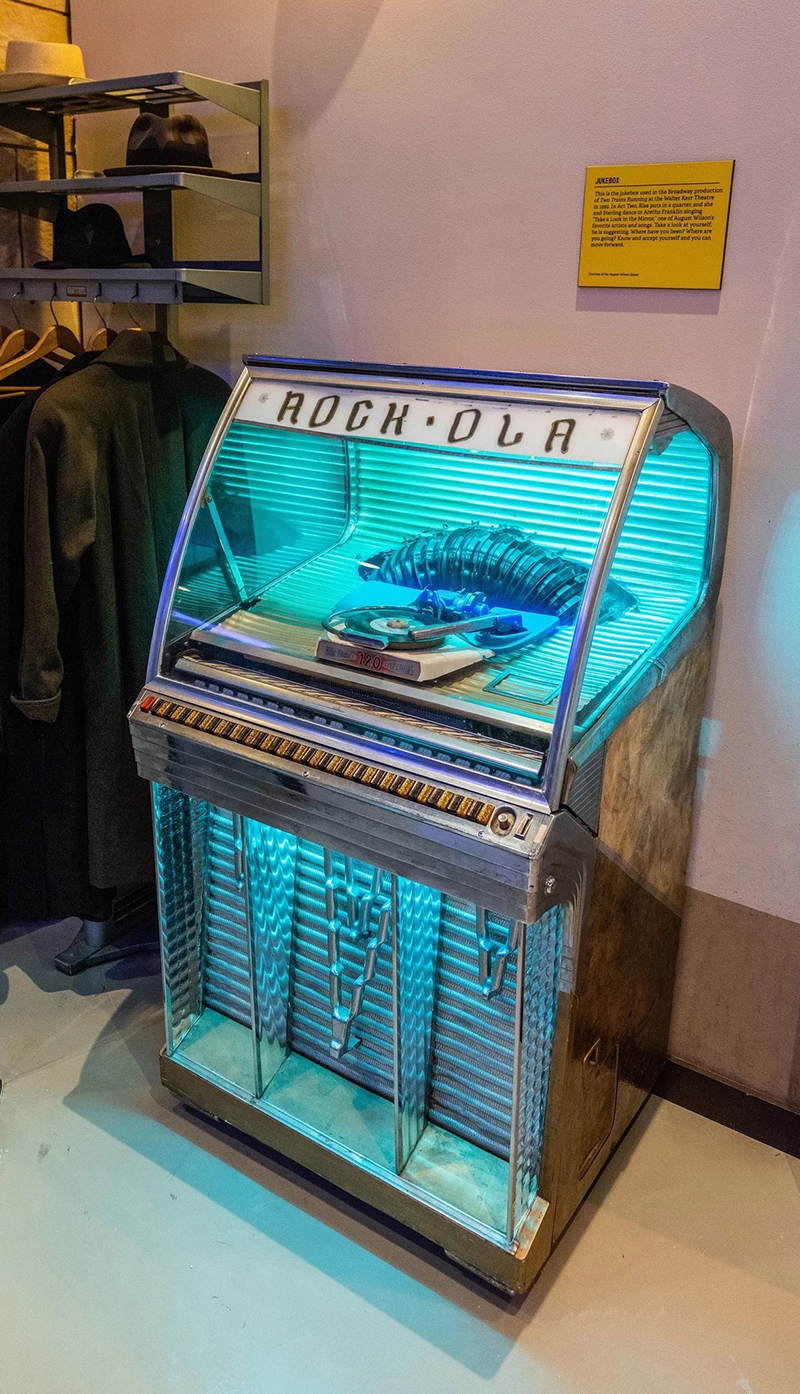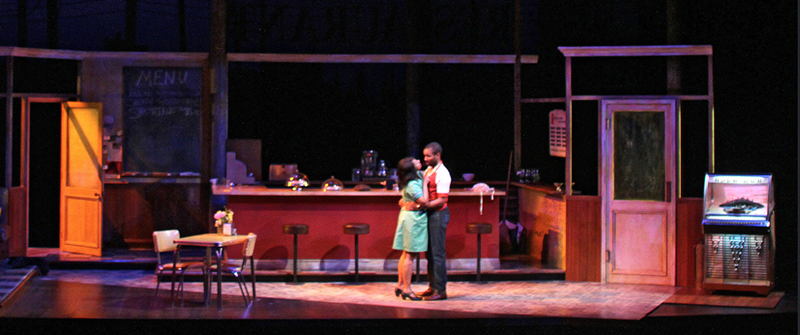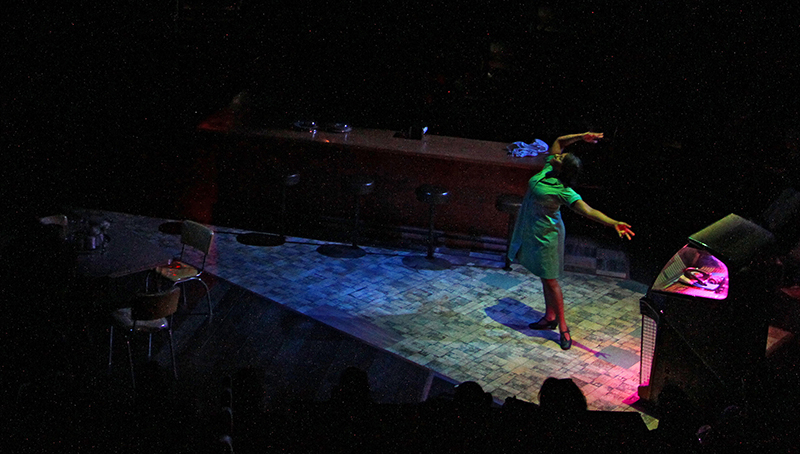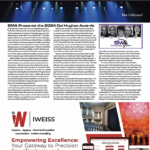
As August Wilson’s Jukebox goes on display as part of the newly opened exhibit August Wilson: The Writer’s Landscape at Pittsburgh’s The August Wilson African American Cultural Center, lighting designer Sherrice Mojgani recalls for our readers how she updated the lighting in this iconic prop from Two Trains Running. This exact jukebox, a 1955 Rock-Ola jukebox, Model 1448, goes all the way back to the original 1990 Yale Rep production of the play. After appearing in nine productions of the show—including a 1992 Broadway run—it then spent its later life in Wilson’s living room in his Seattle home, where the playwright had the jukebox filled with his favorite 45 records. After Wilson died, in 2005, the jukebox went into storage until it returned to the stage in the 2018 co-production by Seattle Rep and Arena Stage, which Mojgani lit. However, before it could return to the limelight, Mojgani knew the jukebox needed some attention so that the prop could perform the magic moment called for in Wilson’s script. We thank her for sharing her work with Stage Directions in PLSN.

In 2018 I was the lighting designer on a co-production of Two Trains Running directed by Juliette Carrillo which began at Seattle Repertory Theatre and then traveled to Arena Stage. After our first tech run in Seattle, there were stacks of notes—notes I had taken, notes from the director, notes from the intern in the balcony… And then there were the notes from Constanza Romero, August Wilson’s widow:
“The sudden working of the jukebox should be a magical moment. Perhaps in the scene where Risa puts the quarter in, the light should go out and it should stop working. When she does make it work with Aretha Franklin, there should be colorful lights coming from inside it, a magical moment should happen which goes with the music, and the moment. A disco effect coming from inside? Red lights turning to orange?”

To be honest, I hadn’t thought too much about the jukebox before arriving in Seattle. I knew it was the jukebox—”August Wilson’s Jukebox”—but I just hadn’t given much thought to it beyond that it was a cool prop that needed electricity.
The morning after that run and receiving Constanza’s note, we opened up the jukebox to see what we could do about that magical moment. Inside, we could see the previous modification. Gold-painted chrome, fluorescent tubes with pink gels taped over them, and a layer of dust covering everything. There was also a perforated metal barrel, designed to create a star effect. When we found the switch that threw it into action, it created lovely pinpricks of light, but also a horrible grating noise. We decided to leave the switch off.
The Jukebox was part of the set for the original production of Two Trains Running at Yale Repertory Theatre in 1990; it stayed with the show for nine productions, including Broadway. In 1994, it was modified and repaired for August Wilson’s personal use by David Logan, who worked in the props department at Seattle Repertory Theatre. The Jukebox is mentioned in a 2001 New Yorker interview as being in August & Constanza’s Seattle living room, along with The Piano from The Piano Lesson.
“Certain Modifications have been made to the jukebox to restore it to working condition after use on stage in Two Trains Running… The coin operation feature of the jukebox was disabled so that unlimited records can be played… Coins can be deposited in the coin slot, but they will have no effect on the jukebox operation and will fall into the cash box. The door on the cash box is not locked and can be opened by prying gently on the edges.” [Instructions and Documentation for Rockola Jukebox, For August Wilson, Prepared by David Logan, June 7th, 1994.]

After giving the gold-painted chrome a good dusting and removing the gel (Lee 109 & Rosco 34) from the fluorescent tubes, the Jukebox was nice and shiny and bright—but not quite magical. So, we installed a strip of LED tape to create the kind of colorful, magical moment Constanza suggested. In the scene, the lights on the Jukebox dance wondrously as Sterling and Risa melt into each other’s arms. But rejuvenating and coming to know this unique piece of American theatre history was also its own magical moment.
Today, with the magic of the Internet, you can continue to enjoy the music—the same record selection listened to by August Wilson. We’ve made a playlist of the songs listed on the title cards on the jukebox, which can be accessed on Spotify; go to www.plsn.me/jukebox.


